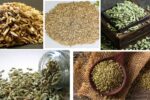Tamarind, often referred to as the “Indian date,” is a tropical fruit widely used across the globe in culinary, medicinal, and industrial applications. Known for its unique sweet and tangy flavor, tamarind plays a crucial role in the cuisines of India, Southeast Asia, Africa, the Caribbean, and Latin America. But have you ever wondered which country leads the world in tamarind production? The answer might not surprise many — India is the largest tamarind producer in the world. In this article, we’ll explore why India holds this top spot, delve into global production patterns, examine the uses and economic importance of tamarind, and highlight the challenges and opportunities in this dynamic sector.
Introduction to Tamarind: A Versatile Fruit

Tamarind (Tamarindus indica) is a tropical tree native to Africa but has been cultivated for centuries in South Asia, particularly in India. The tree produces pod-like fruits filled with a sticky, dark brown pulp that is rich in tartaric acid, sugars, and B vitamins. Tamarind is widely used:
- As a souring agent in foods
- In beverages, sauces, and chutneys
- In traditional and Ayurvedic medicines
- For metal polishing and other industrial uses
This wide range of applications has kept tamarind in high demand globally, and several countries have capitalized on its economic potential.
India: The Reigning Global Leader in Tamarind Production

India is by far the largest producer of tamarind in the world, accounting for over 70% of global production. The country’s vast tropical climate, suitable soil conditions, and long-standing agricultural traditions make it ideal for large-scale tamarind cultivation.
Key Tamarind-Producing States in India:
- Tamil Nadu: The leading producer, contributing nearly one-third of India’s output.
- Andhra Pradesh: Known for both commercial plantations and wild harvesting.
- Karnataka: A major exporter of tamarind products.
- Maharashtra and Odisha: Also significant contributors.
Estimated Production Statistics:
- Annual Production: Over 300,000 to 350,000 metric tons
- Export Share: India exports around 40,000 metric tons of tamarind and its products annually, mainly to countries like the USA, UAE, Sri Lanka, Malaysia, and the UK.
India’s tamarind industry is supported by both wild harvesting from forest lands and cultivated plantations. Tamarind is often grown on marginal lands or as a secondary crop, which makes it economically viable for small farmers and tribal communities.
Other Major Tamarind Producing Countries

While India dominates the global stage, several other countries also play a role in tamarind production and export:
1. Thailand
Thailand is known for its sweet tamarind variety, which is less sour and consumed as a fresh fruit. Though not produced at India’s scale, Thailand exports a substantial amount of high-quality sweet tamarind to China, Japan, and the Middle East.
2. Indonesia
Indonesia cultivates tamarind in Java and Sumatra. It is used in traditional cooking and herbal medicine. Most tamarind produced here is for domestic consumption, though some quantity is exported.
3. Mexico
Mexico grows tamarind mainly in the tropical states of Oaxaca, Guerrero, and Chiapas. It is used in tamarindo beverages, sauces, and candy. The country also exports tamarind to the U.S. and other Latin American countries.
4. Myanmar, Sri Lanka, and the Philippines
These countries have localized tamarind production for domestic markets and minor exports. In Sri Lanka, tamarind is used extensively in fish curries and herbal treatments.
Economic Importance of Tamarind

Tamarind plays a crucial economic role, particularly in rural economies. In India, tamarind collection is a livelihood source for tribal communities during the dry season. It requires low input costs, making it an ideal crop for farmers in drought-prone areas.
Market Value and Products:
- Fresh pulp
- De-seeded blocks
- Concentrates and pastes
- Tamarind seed powder (used in textile sizing and adhesives)
- Tamarind kernel polysaccharide (used in cosmetics and pharmaceuticals)
The value-added products significantly increase revenue potential and are becoming a growing trend in agro-processing industries.
Challenges in Tamarind Production

Despite its benefits, tamarind production faces several challenges:
1. Post-Harvest Losses
Tamarind is highly perishable and requires proper processing, drying, and storage. Inadequate infrastructure leads to significant losses.
2. Market Fluctuations
The price of tamarind can vary greatly depending on harvest success, international demand, and local market forces, affecting farmer incomes.
3. Lack of Organized Cultivation
Much of India’s tamarind still comes from wild sources. Lack of organized orchards limits productivity and consistency in supply.
4. Export Limitations
Stringent phytosanitary standards, particularly in Western markets, make it difficult for some exporters to meet quality benchmarks.
Government Support and Development Initiatives
The Indian government, through agencies like Tribal Cooperative Marketing Development Federation (TRIFED) and National Medicinal Plants Board (NMPB), supports tamarind collection and processing. Several states have also begun promoting tamarind as a non-timber forest product (NTFP) and encouraging value addition at the village level.
Efforts are underway to:
- Improve tamarind processing technology
- Provide better storage facilities
- Develop export markets
- Offer training for local communities on hygienic processing
Future Prospects
The global demand for natural and plant-based products continues to rise. Tamarind, with its unique flavor and numerous applications, is well-positioned to benefit from this trend. Several key developments could drive future growth:
1. Global Food Trends
The use of tamarind in health drinks, sauces, and vegan food is increasing in Western markets.
2. Pharmaceutical and Cosmetic Applications
Tamarind seed extract and polysaccharides are gaining attention in the wellness and beauty industries.
3. Organic Certification and Branding
Farmers and cooperatives obtaining organic certification and developing geographical indication (GI) tags can fetch premium prices.
Conclusion
India’s dominance as the largest tamarind producer in the world is rooted in its favorable climate, traditional knowledge, and cultural affinity for the fruit. As global interest in tamarind continues to grow, India has both a challenge and an opportunity: to modernize its tamarind industry while preserving the livelihoods of those who have harvested it for generations.
By investing in better processing, storage, marketing, and sustainable farming practices, India can not only retain its leadership but also transform its tamarind sector into a model for inclusive and profitable agricultural development.






Leave A Comment